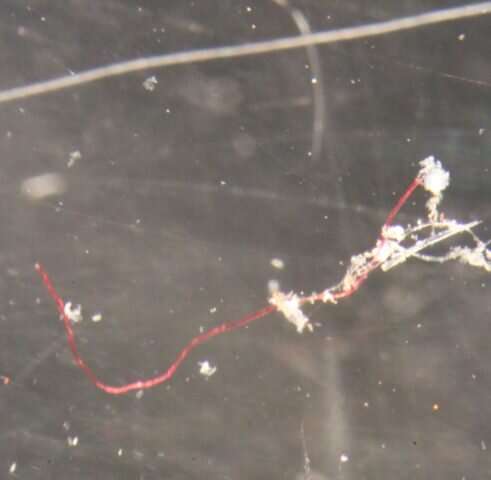Microplastic pollution exists on the seabed in Antarctica in the same quantities as in the North Atlantic and Mediterranean, scientists have found.
A study from researchers at Liverpool John Moores University (LJMU), Queen’s University Belfast and British Antarctic Survey, took samples from remote parts of the Antarctic Peninsular, South Georgia and the Sandwich Islands. The research is published today (23 October) in the journal Environmental Science & Technology.
The team discovered at least one particle of microplastic for every gram of sediment was found to be residing on the Antarctic seabed, similar to pollution rates other oceanic regions much closer to human activity and habitation. These were fragments, films, and fibers of the most commonly discarded polymers—polyester, polypropylene, and polystyrene—all often used in packaging.
“This is the first report globally of such a finding which we consider very important in our understanding of the global scale of microplastic pollution,” confirmed Dr. Kostas Kiriakoulakis, senior lecturer in environmental science at LJMU.
Samples of the seabed were collected up to 3.6 km in depth by British Antarctic Survey scientist Dr. Katrin Linse, who traveled to the Southern Ocean and Antarctica as part of a wider research project.
Co-author Dr. Linse, a senior biodiversity biologist, says: “I was interested in the amount of microplastics that the seafloor-inhabiting invertebrates, like clams, snails, worms, shrimps, or brittles stars, in Antarctica are exposed to in one of the Earth’ greatest wilderness.
“We believe this is the first analysis of microplastic pollution in Southern Ocean deep-sea sediments, and it will serve as a baseline for future studies from the surface to the bottom of the ocean.”
Ph.D. researcher Mánus Cunningham, at Queen’s University, said: “Our research highlights that no matter how remote an ecosystem is, it will still show the artifacts of human influence. We have been dumping plastic into our oceans for roughly 70 years now, so in hindsight this may not be terribly surprising. What is surprising is that the levels of this type of pollution are comparable to what we consider moderately or highly polluted regions of the world’s oceans.”
As to why the incidence of plastics is so high in such a remote location an open question. Theories range from ocean currents or the wind, to local activity (e.g. fishing) and possibly some internal biologically mediated mechanisms namely microplastics caught up by life forms and transported to depths.
Sonja Ehlers, of the Federal Institute of Hydrology, said: “It would be interesting to know the sources of the different microplastic types that we found, and the role that ship traffic or research stations may play in their accumulation.”
The team hopes the findings will help future efforts to measure the ecological and environmental damage that might be caused by these plastic fragments, by providing a more “robust measure” of its accumulation in remote parts of the ocean. Plastics can take hundreds of years to degrade.
14 million tonnes of microplastics on sea floor: Australian study
More information:
Eoghan M. Cunningham et al. High Abundances of Microplastic Pollution in Deep-Sea Sediments: Evidence from Antarctica and the Southern Ocean, Environmental Science & Technology (2020). DOI: 10.1021/acs.est.0c03441
Provided by
British Antarctic Survey
Citation:
Microplastics ‘abundant’ in remote polar seas (2020, October 23)
retrieved 26 October 2020
from https://phys.org/news/2020-10-microplastics-abundant-remote-polar-seas.html
This document is subject to copyright. Apart from any fair dealing for the purpose of private study or research, no
part may be reproduced without the written permission. The content is provided for information purposes only.



